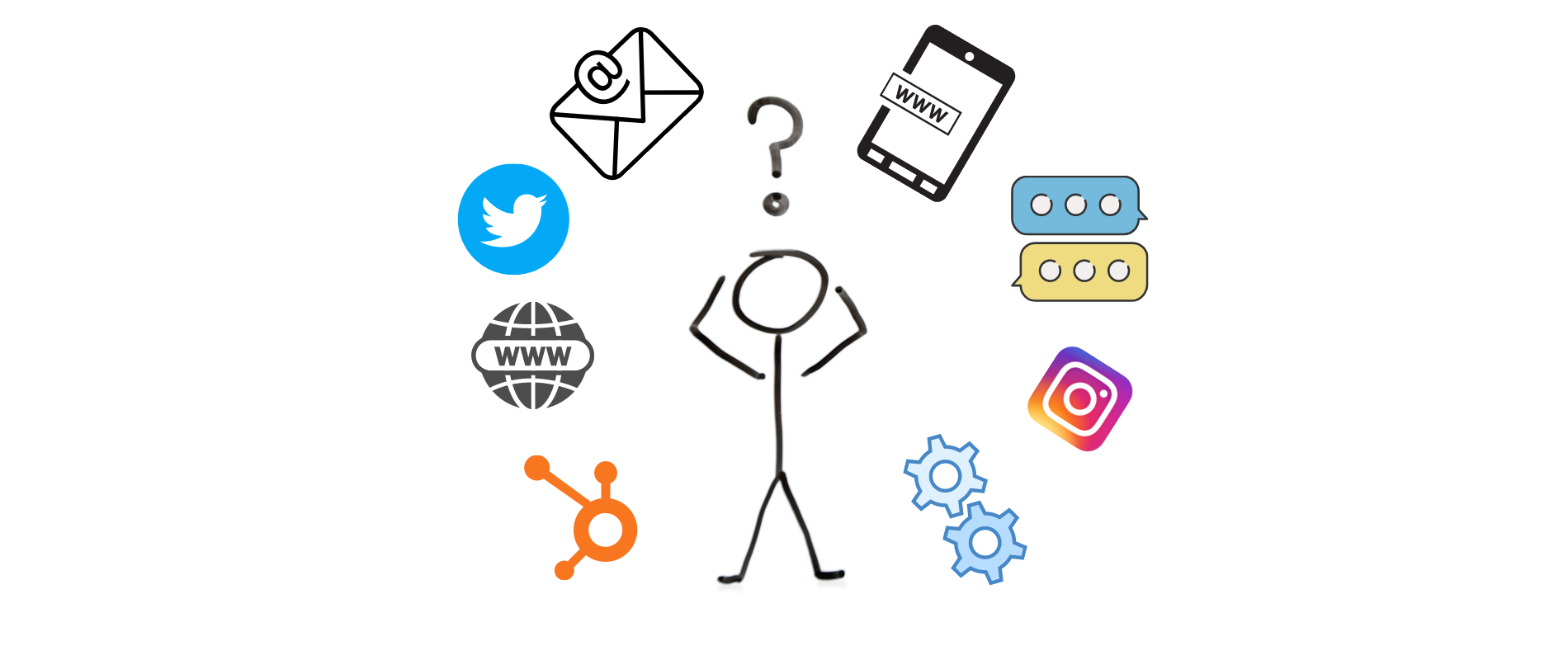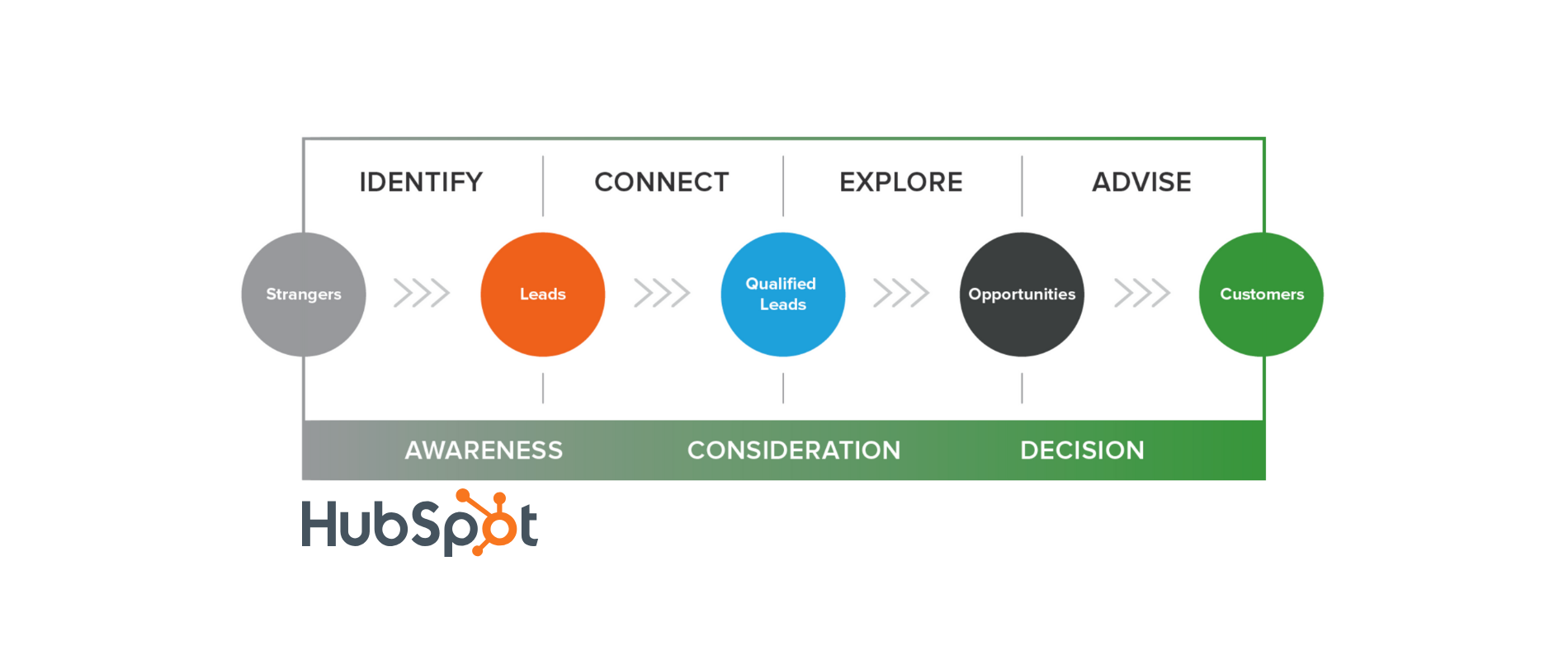
Get weekly
HubSpot updates
It's 2020, and your customers are making purchasing decisions on their own – no surprises there.
For example, when a business is looking for a new software solution, they may have a broad or well-defined idea of the pain points they'd like to address. A quick online search will point them towards the brands that align with their needs and preferences. From there, the researcher can dive into your available content and learn more about your SaaS solution's features.
The more content you have available, the easier it becomes for the buyer to make a decision. They may check out your social media profile to see if they like your company culture, or look up Trustpilot reviews to see what others are saying about you. If you've got valuable and engaging content on your website, they may even sign up to receive your monthly newsletter email.
Ultimately, if they like what they see, your sales people may receive a direct call. The pathway to finding your business this way is heavily reliant upon inbound marketing strategy.
The inbound methodology encompasses marketing and sales activities. With an inbound strategy, both of these core business functions have to support each other in order to build a result-oriented buyer's journey. The aim is to establish fruitful, long term relationships that address the customer's needs at each lifecycle stage.
So, in answer to the question, “What is inbound sales?”, here’s our definition:
"Inbound sales happen when a business decides to focus on the unique challenges that their targeted buyer personas are facing. An inbound sales team will generate data, set goals, and formulate a strategy that addresses the needs of prospects relative to their position in the buyer's journey. Rather than approaching unqualified leads at scale, they will nurture and educate prospects with helpful content that guides them towards making a purchasing decision."
The creation of this engaging content is largely up to your inbound marketing team – are you starting to see the relationship between the two?
Do outbound sales still work?
The traditional approach to selling meant that businesses initiated interactions with potential buyers, rather than the buyer discovering the brand for themselves. Sales reps were usually tasked with pushy tactics that made their job all about getting through tonnes of cold calls until someone eventually made a purchase instead of focusing on quality interactions with genuine potential buyers. In this scenario, engagement isn't always focussed around the customer and whether they're a match for your business proposition. Closing the sale, by whatever means possible, is often the preferred path.
Outbound utilises mass marketing techniques and hard-sell strategies to convince customers to part with their money. While this may lead to sudden peaks in demand and profits, it's by no means a sustainable growth strategy. As the world becomes increasingly connected via the internet, customers prefer to self-educate and study the experience of other consumers before making contact with sales reps or undertaking further in-person inquiries.
While a healthy marriage between outbound and inbound sales tactics is possible and encouraged, there needs to be a cultural shift in your company where the focus is on delivering high-quality customer experiences. Analysing your buyers' behaviour and guiding the right leads through your sales funnel will make your marketing investment more fruitful, and your buyers more satisfied.
With the right approach, inbound and outbound can work together, as long as you build a sales process that inspires confidence in your brand and trust in your sales people–this can only happen, of course, if you're accumulating highly qualified leads in the first place.
Four steps to inbound sales success
1. Collaborate and align with your marketing team
Since inbound marketing is responsible for creating the content your sales people use to support and nurture leads, communication and alignment between the two teams are essential for a successful sales process. Marketing works to generate leads, but without an efficient system to pass this information onto the sales team, visibility is lost, and conversion rates will suffer.
It's crucial to find a customer relationship management (CRM) software that fits the needs of your business. Onboarding and training your sales staff is an essential part of ensuring that your CRM brings in ROI, as this system will become a foundational tool in your sales and marketing process. Sales can have a quick overview of the available leads in their pipeline, as well as all the necessary information to profile them and make sure that their communication strategy matches the leads position in the buyer's journey.
At this stage, it's also important to establish your lead scoring model so that both teams have a shared vision of what a high-quality lead looks like.
Effective lead scoring enables you to increase sales efficiency by focusing your attention on the leads that show the highest potential of converting. This will save your sales team time on pursuing leads that aren't yet ready or sufficiently warmed up.
2. Clearly define your buyer personas
Defining your buyer personas should be a joint task between your sales and marketing departments. The two teams can collaborate to carve out the ideal customer so that there's no confusion about who they're targeting and why. Being detailed and thorough in this process will help you to come up with tangible and practical solutions for your customers.
Some key characteristics and features to establish:
- What’s your buyer's job role?
- What’s their seniority level?
- Do they have particular interests relating to their industry?
- What challenges are they facing?
- What priorities are they likely to have?
- What is the size of their company?
- What kind of budget do they have to work with?
- How would they like to be contacted – telephone, email, social media?
- What personal and professional goals are they looking to achieve?
By getting this part down in the initial phase of your inbound strategy, you will create a scalable model that allows you to reach your business growth potential.
3. Implement and continuously test your strategy
Once you launch your inbound sales strategy, you'll have to be prepared to analyse your customers' responses and tweak your plans where necessary. There are key metrics which you will have to pay close attention to in order to optimise your campaigns and ensure that your inbound sales strategy is always on track. The metrics to study include outreach activities, lead generation metrics, as well as your sales teams' activity and productivity.
By this we mean:
- Calls
- Emails
- Conversations
- Social medial interactions
- Meetings scheduled
- Proposals sent
When looking at your customer's behaviour, you want to pay close attention to:
- The actions they take on your website
- The content they engage with
- The personal information they submit
- The time they spend on particular pages
All of this information can be an indicator of how your inbound marketing strategy is working and whether something else can be done to support the sales process. Building up an understanding of your customer's interactions and behaviour will help you to tailor your services and align our efforts with what your customers truly want.
4.Adopt account-based marketing
Account-based marketing (ABM) is a growth strategy that focuses on creating personalised experiences for business accounts, or specific groups of buyers. Instead of the common one-to-one approach, you'd identify the high-value accounts in your database and target the stakeholders within these groups. The result is a more streamlined process where sales and marketing teams align to focus on these accounts and delight the individuals within them.
ABM relies on the great inbound content you already have to attract the right buyers. From there, you can target a specific subset of high-value buyers to accelerate the conversion process through the delivery of a highly personalised customer experience.
You'll start by identifying your target audience as you would your buyer personas, from there you can decide which content channels will be most effective; for example email, a LinkedIn message, or setting up a call. ABM is the perfect strategy for B2B sellers because it works to engage numerous individuals within a company – the idea is to get everyone in the business on board and keen to use your SaaS product. This means your strategy has to address the concerns within a whole team and win over each stakeholder.
Sales and marketing will work together closely to identify potential challenges and collaborate on the type of content that will satisfy decision-makers, as well as select the best channels to reach out to them. As with every inbound activity, measuring and reporting on your ABM strategy will be a crucial step. With the right CRM tools, you can track engagement and revenue to ensure that your efforts are yielding results and that your customers are on a steady path to retention.
Inbound sales in a nutshell
In an interview, Mark Roberge describes inbound sales as "[...] a sequence of stages that an opportunity goes through as it progresses from a lead to a customer."
SaaS businesses that apply this methodology to their sales will take a much more systematised and measurable approach to pursuing and converting leads into customers.
Key features of inbound sales:
- Automation
- Personalisation
- Measurability
- Scalability
Inbound sales allow businesses to drop expensive, generalised marketing activities that create dissonance between the customer and the offering. Instead, your sales team has a well-defined buyer persona or account to target, along with a set of criteria that everyone in your company understands and applies to all other business activities.
Essentially, this unifies your efforts, shortens your sales cycle, creates happier customers, and ensures the longevity of your brand. What's more, the inbound sales model makes it easier to identify any hurdles or blockages in your pipeline. Instead of blindly forging ahead, your sales team can frequently review their progress and make adjustments that will help to reassure the customer and move them along to the decision stage of the buyer's journey.
At Klood, we’ve helped countless SaaS businesses to implement inbound sales into their daily practice. We can equip and onboard your team with industry-leading sales tools such as HubSpot, and teach them how to get the most out of their efforts. To learn more about how an inbound sales strategy can transform your approach to selling and help you to intensify your presence in the market, don’t hesitate to get in touch with one of our friendly experts today

